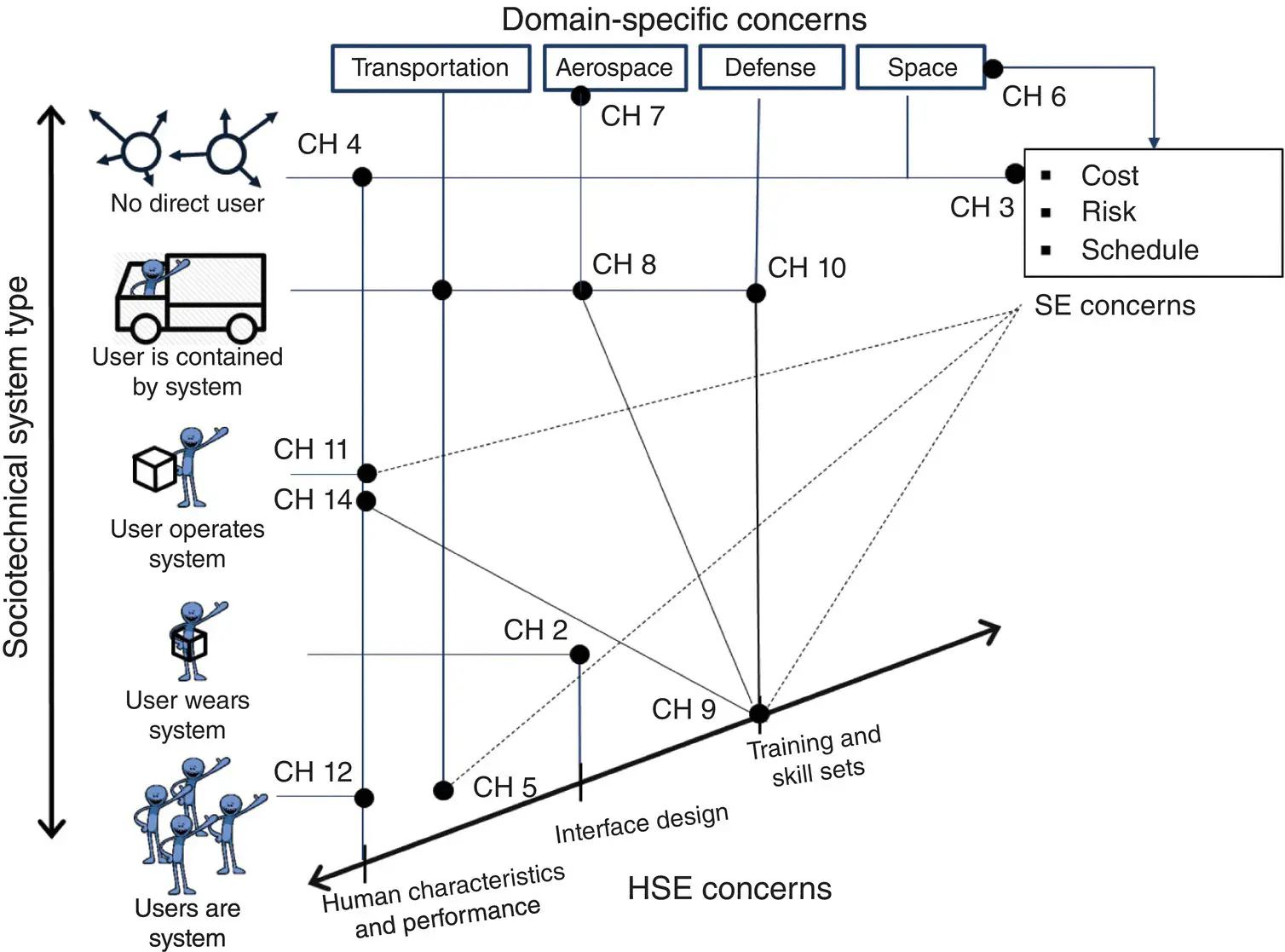A Framework of Human Systems Engineering
Здесь есть возможность читать онлайн «A Framework of Human Systems Engineering» — ознакомительный отрывок электронной книги совершенно бесплатно, а после прочтения отрывка купить полную версию. В некоторых случаях можно слушать аудио, скачать через торрент в формате fb2 и присутствует краткое содержание. Жанр: unrecognised, на английском языке. Описание произведения, (предисловие) а так же отзывы посетителей доступны на портале библиотеки ЛибКат.
- Название:A Framework of Human Systems Engineering
- Автор:
- Жанр:
- Год:неизвестен
- ISBN:нет данных
- Рейтинг книги:4 / 5. Голосов: 1
-
Избранное:Добавить в избранное
- Отзывы:
-
Ваша оценка:
- 80
- 1
- 2
- 3
- 4
- 5
A Framework of Human Systems Engineering: краткое содержание, описание и аннотация
Предлагаем к чтению аннотацию, описание, краткое содержание или предисловие (зависит от того, что написал сам автор книги «A Framework of Human Systems Engineering»). Если вы не нашли необходимую информацию о книге — напишите в комментариях, мы постараемся отыскать её.
A Framework of Human Systems Engineering
Applications and Case Studies
A Framework of Human Systems Engineering: Applications and Case Studies
A Framework of Human Systems Engineering — читать онлайн ознакомительный отрывок
Ниже представлен текст книги, разбитый по страницам. Система сохранения места последней прочитанной страницы, позволяет с удобством читать онлайн бесплатно книгу «A Framework of Human Systems Engineering», без необходимости каждый раз заново искать на чём Вы остановились. Поставьте закладку, и сможете в любой момент перейти на страницу, на которой закончили чтение.
Интервал:
Закладка:
HSE applies what is known about the human to the design of systems. It focuses on the tasks that need to be performed, the allocation of specific tasks to human roles, the interactions required among the human operators, and the constraints imposed by human capabilities and limitations. A key focus of HSE is on the determination of the human role strategy; this allocation determines the implications for manning, training, and ultimately cost (ONR 1998). The human elements of the system possess knowledge, skills, and abilities that must be accounted for in system design, along with their physical characteristics and constraints, similar to other technical elements of the system. The goal of HSE is to augment the system descriptions with human‐centered models and analysis; these purposeful models inform trade‐off analyses between system design, program costs, schedule, and overall performance (Handley 2019a). As part of the SE process, HSE incorporates the human‐related specifications into the system description to improve overall system performance through human performance analysis throughout the system design process.
1.4 Development of the HSE Framework
The HSE framework was developed for the SE community to provide a basis for categorizing and understanding applications of HSE for different types of sociotechnical systems. It was developed by cross‐referencing and aligning different aspects of domains, system types, and design stages with applicable HSE and HSI tools and methods. The goal was to categorize projects in such a way that systems engineers and HSI practitioners could leverage tools, processes, and lessons learned across projects (Handley 2019b).
The original framework was developed by a team of Army HSI practitioners and subject matter experts (SMEs). The HSE framework was part of a larger project designed to mitigate human performance shortfalls and maximize system effectiveness by integrating well‐defined HSE (and where applicable HSI) processes and activities into the acquisition life cycle and to make these analyses explicit to stakeholders to increase “buy‐in” early in the design process (Taylor 2016). The resulting ontology could be expanded as needed to provide a common framework to identify elements and relationships important to the application of HSE, including classifying different stakeholders, system types, acquisition timelines, and user needs. This would allow HSI practitioners, systems engineers, and program managers to determine appropriate tools, methodologies, and information. The overall goal was to provide an overall organizing structure for HSE processes and products relevant to the SE effort that could be linked to a comprehensive repository of information and concurrent and past projects (Taylor 2016).
The original HSE framework is shown in Figure 1.1; it is a subset of the envisioned comprehensive ontology. This framework was used successfully to categorize different projects that involved the intersection of SE and HSI, including the Army’s transition to cross‐functional teams (Handley 2018). The framework represents the initial effort to provide a consistent taxonomy to determine appropriate tools and methodologies to address sociotechnical system concerns by offering an organizing structure to identify similar efforts.

Figure 1.1 HSE original framework.
The dimensions and descriptions of the original framework are as follows:
1 Sociotechnical system type – This dimension represents the different ways that users interact with systems. From the “users are the system,” which represents organizations and teams, to the other extreme “no direct system,” which represents autonomous systems, the intermediary points suggest different interaction points between users and systems.
2 Domains – This dimension represents the different contexts of use for systems, as different domains can induce different considerations and restrictions. Domain‐induced constraints include environmental variables, operator state, organizational factors, and personnel characteristics. While the framework was developed specifically for military systems, it can be extended and adapted across various domains such as space, transportation, and aerospace.
3 System design phases – The intent of the original framework was to capture the impact of different tools and methods at different phases of system design, i.e. concept, preliminary design, detailed design, test and evaluation, deployment, and retirement. This approach emphasized the benefits of applying human‐centered analyses early in the system development.
4 Tools and methods – By mapping the three previous dimensions to available tools and methods, the intent of the framework was that it could be used to suggest tool sets for different human‐centered analyses depending on the system type, domain, and stage of system development.
The framework acts as an index to identify essential information and previously validated findings. It can be used to suggest tools, methods, processes, data, standards, and expertise across similar systems and/or domains. The intent in developing the framework was that the dimensions could be expanded or modified as needed to capture evolving elements in sociotechnical systems and provide the metadata to classify the required HSE efforts.
1.5 HSE Applications
The original framework has been repurposed here to classify the case studies that compose this volume. The original dimensions have been slightly modified to better provide an index to the cases presented. This revised framework maintains the sociotechnical and domain dimensions; however, the second two dimensions were modified slightly to represent both HSE and SE concerns as shown in Figure 1.2. Note that for simplicity, both the HSE and SE concerns dimensions were limited to those that appear in the case studies. The modified framework presents a better categorization of the cases provided and facilitates easy identification of cases that best match the readers' interest.

Figure 1.2 HSE framework as an index for the case studies.
Additionally, the rendering of the framework has changed from the original tree structure to a multi‐axis plot. Each axis represents one of the framework dimensions, and the hash marks identify the subcategories. This visualization allows the cases to be “plotted” as an intersection of two (or more) dimensions. While the original framework identified the categories for each domain, the new rendering allows these categories to be used as a classification system, easily identifying the key content of each case study. As the applications in this volume are quite varied, the framework provides a logical way to organize and connect the case studies.
As shown in Figure 1.2, each chapter has been located on the framework to show its intersection among the dimensions. The first section of the book contains applications that describe different sociotechnical system types and their relationships with the human user. For example, Chapter 2describes human considerations for domain awareness and focuses on human interface design. The authors make a comprehensive analysis of situational awareness platforms for public safety and stress the importance of traditional training methods coupled with cutting‐edge technology. Chapter 3defines the sociotechnical factors shown to improve success using artificial intelligence in a system development. With the integration of artificial intelligence into every system domain, the authors employ a quantitative model of the sociotechnical space to identify the discrepancies between not considering the stakeholder and high risks in complex agile projects. Chapter 4considers both technology readiness and autotomy level to determine meaningful human control based on trust in human‐autonomy teaming. The authors use an example of herding sheep with airborne drones to provide a validation scenario for the proposed concept and process.
Читать дальшеИнтервал:
Закладка:
Похожие книги на «A Framework of Human Systems Engineering»
Представляем Вашему вниманию похожие книги на «A Framework of Human Systems Engineering» списком для выбора. Мы отобрали схожую по названию и смыслу литературу в надежде предоставить читателям больше вариантов отыскать новые, интересные, ещё непрочитанные произведения.
Обсуждение, отзывы о книге «A Framework of Human Systems Engineering» и просто собственные мнения читателей. Оставьте ваши комментарии, напишите, что Вы думаете о произведении, его смысле или главных героях. Укажите что конкретно понравилось, а что нет, и почему Вы так считаете.












